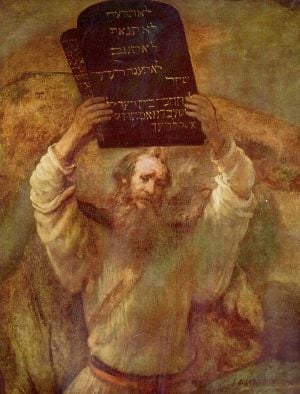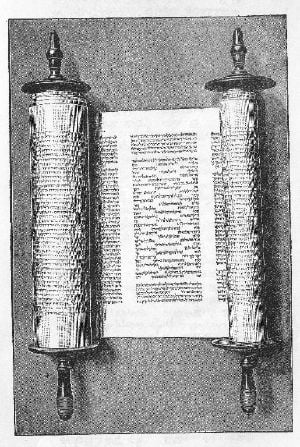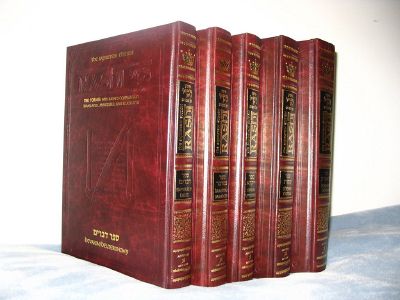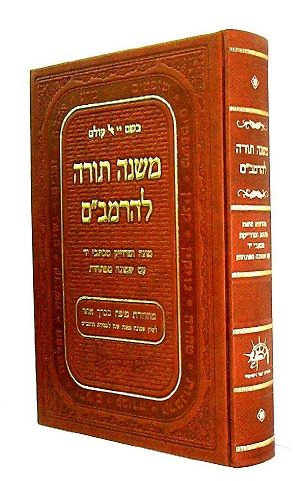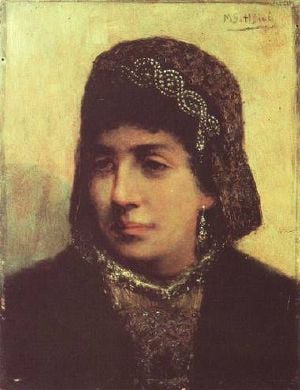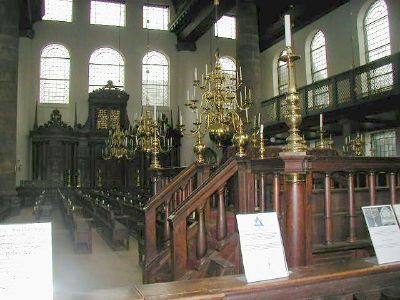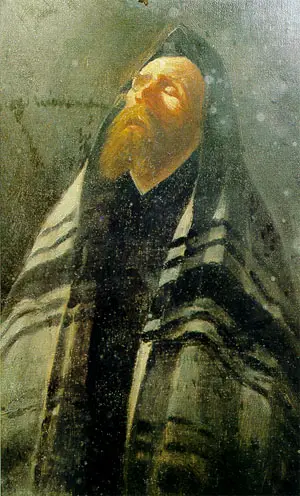| Category |
| Jews · Judaism · Denominations |
|---|
| Orthodox · Conservative · Reform |
| Haredi · Hasidic · Modern Orthodox |
| Reconstructionist · Renewal · Rabbinic · Karaite |
| Jewish philosophy |
| Principles of faith · Minyan · Kabbalah |
| Noahide laws · God · Eschatology · Messiah |
| Chosenness · Holocaust · Halakha · Kashrut |
| Modesty · Tzedakah · Ethics · Mussar |
| Religious texts |
| Torah · Tanakh · Talmud · Midrash · Tosefta |
| Rabbinic works · Kuzari · Mishneh Torah |
| Tur · Shulchan Aruch · Mishnah Berurah |
| Šł§umash ¬∑ Siddur ¬∑ Piyutim ¬∑ Zohar ¬∑ Tanya |
| Holy cities |
| Jerusalem · Safed · Hebron · Tiberias |
| Important figures |
| Abraham · Isaac · Jacob/Israel |
| Sarah · Rebecca · Rachel · Leah |
| Moses · Deborah · Ruth · David · Solomon |
| Elijah · Hillel · Shammai · Judah the Prince |
| Saadia Gaon · Rashi · Rif · Ibn Ezra · Tosafists |
| Rambam · Ramban · Gersonides |
| Yosef Albo · Yosef Karo · Rabbeinu Asher |
| Baal Shem Tov · Alter Rebbe · Vilna Gaon |
| Ovadia Yosef · Moshe Feinstein · Elazar Shach |
| Lubavitcher Rebbe |
| Jewish life cycle |
| Brit · B'nai mitzvah · Shidduch · Marriage |
| Niddah · Naming · Pidyon HaBen · Bereavement |
| Religious roles |
| Rabbi · Rebbe · Hazzan |
| Kohen/Priest · Mashgiach · Gabbai · Maggid |
| Mohel · Beth din · Rosh yeshiva |
| Religious buildings |
| Synagogue · Mikvah · Holy Temple / Tabernacle |
| Religious articles |
| Tallit · Tefillin · Kipa · Sefer Torah |
| Tzitzit · Mezuzah · Menorah · Shofar |
| 4 Species · Kittel · Gartel · Yad |
| Jewish prayers |
| Jewish services · Shema · Amidah · Aleinu |
| Kol Nidre · Kaddish · Hallel · Ma Tovu · Havdalah |
| Judaism & other religions |
| Christianity · Islam · Catholicism · Christian-Jewish reconciliation |
| Abrahamic religions · Judeo-Paganism · Pluralism |
| Mormonism · "Judeo-Christian" · Alternative Judaism |
| Related topics |
| Criticism of Judaism · Anti-Judaism |
| Antisemitism · Philo-Semitism · Yeshiva |
Judaism is the religious culture of the Jewish people. While far from monolithic in practice and having no centralized authority or binding dogma, Judaism has remained strongly united around several religious principles, the most important of which is the belief in a single, omniscient, transcendent God that created the universe.
According to Jewish thought, God established a covenant with the Jewish people, then known as the Israelites, and revealed his laws and commandments to them in the form of the Torah. Jewish practice is devoted to the study and observance of these laws and commandments, as they are interpreted according to various ancient and modern authorities.
Judaism does not easily fit into common western categories, such as religion, ethnicity, or culture. In religious terms Judaism today is comprised of three main denominations: Orthodox (including several varieties), Conservative, and Reform, plus a large body of secular Jews who belong to no organized religious institution.
Judaism is one of the first recorded monotheistic faiths and one of the oldest religious traditions still practiced today. The tenets and history of Judaism form a major part of the foundation of other Abrahamic religions, including Christianity and Islam.
Religious view of Judaism's development
Much of the Hebrew Bible is an account of the Israelites' relationship with God as reflected in their history from the time of Abraham until the building of the Second Temple (c. 350 B.C.E.). Abraham is generally seen as the first Jew, although he was also the progenitor of several non-Jewish tribes. Rabbinical literature holds that he was the first person to reject idolatry and preach monotheism. As a result, God promised he would have many children: "Look now toward heaven and count the stars. So shall be your progeny" (Genesis 15:5).
Abraham's first child was Ishmael and his second son was Isaac, whom God said would continue Abraham's work and whose descendants would inherit the Land of Israel (then called Canaan), after having been exiled and redeemed. God sent Abraham's grandson, the patriarch Jacob and his children to Egypt, where they later became enslaved. As Jacob was also known as "Israel," his tribe became known as the Israelites.
God sent Moses to redeem the Israelites from slavery. After the Exodus from Egypt, God led the Jews to Mount Sinai and gave them the Torah, eventually bringing them to the land of Canaan, which they conquered at God's command. God designated the descendants of Aaron, Moses' brother, to be a priestly class within the Israelite community. They first officiated in the Tabernacle (a portable house of worship), and later their descendants were in charge of worship in the Temple in Jerusalem.
Once the Israelites had settled in Canaan, the Tabernacle was established in the city of Shiloh for over 300 years. During his time, God provided great leaders known as the judges to rally the nation against attacking enemies sent by God as a punishment for the sins of the people, who failed to separate themselves from the Canaanites and joined in worshiping the Canaanite gods.
The people of Israel then told the prophet Samuel, the last and greatest of the judges, that they needed to be governed by a permanent king, as were other nations. God acceded to this request and had Samuel appoint Saul to be their first monarch. However, when Saul disunited with Samuel and proved to lack zeal in destroying Israel's enemies, God instructed Samuel to appoint David in his stead.
David and Saul struggled with each other for many years, but once David's kingship was established, he told the prophet Nathan that he would like to build a permanent temple for the Lord. God promised the king that he would allow his son to build the temple and that the throne would never depart from his children. It was thus David's son, Solomon, who built the first permanent temple in Jerusalem, as described in the Books of Kings.
However, Solomon sinned by erecting altars for his foreign wives on hilltops near Jerusalem. Thus, after death, his kingdom was split into the two kingdoms of Israel and Judah. After several hundred years, because of rampant idolatry, God allowed Assyria to conquer Israel and exile its people. The southern Kingdom of Judah remained under the rulership of the House of David. However, as in the north, idolatry increased to the point that God allowed Babylonia to conquer the kingdom, destroy the Temple, and exile the people of Judah to Babylonia, with the promise that they would be redeemed after 70 years.

King Cyrus of Persia allowed the Jews to return, and, under the leadership of Ezra and Nehemiah the Temple was rebuilt. The Second Temple stood for 420 years, after which it was destroyed by the Roman general (later emperor) Titus in reaction to a Jewish rebellion in 70 C.E. Since then, Judaism has focused on God's law, and no longer has an active priesthood, nor can it practice the rituals of sacrifice and other rites formerly practiced in the Temple. Only when the Messiah, a descendant of King David, arises to restore the glory of Israel will the Temple in Jerusalem be rebuilt and the sacrificial tradition be renewed.
The Torah given on Mount Sinai was summarized in the five books of Moses. Together with the books of the prophets it is called the Written Torah. The details and interpretation of the law, which are called the Oral Torah, were originally unwritten. However, as the persecutions of the Jews increased and the details were in danger of being forgotten, rabbinic tradition holds that these oral laws were recorded in the Mishnah and the Talmud, as well as other holy books. The Talmud (including the Mishnah) now serves as a central text of Judaism along with the Hebrew Bible.
Critical view
In contrast to the Orthodox religious view of the Hebrew Bible, modern scholars suggest that the Torah consists of a variety of inconsistent texts that were edited together in a way that calls attention to divergent accounts (see Documentary hypothesis). Thus, although monotheism is fundamental to Rabbinic Judaism, the Hebrew Bible also speaks of other gods as really existing, the Hebrew deity Yahweh being the national god of the Israelites. Many of the Israelites worshiped Yahweh, but they often honored other deities such Baal and Ashera together with him. Biblical writers of the seventh century B.C.E. and later took a more firmly monotheistic view. They urged complete separation from Canaanite culture, insisted that Jerusalem was the only authorized place of sacrifice to Yahweh, and wrote the history of Judah and Israel in such as way that made it appear as if their priestly ideology had always been known to the Israelites, who sinned against God by failing to adhere to it.
It was thus only after the Babylonian exile that this priestly religion known today as Judaism became predominant. The religion of the Israelites, therefore, is far from identical with the biblical religion of Judaism.
Jewish denominations
Over the past two centuries the Jewish community has divided into a number of Jewish denominations. Each of these has a different understanding of what principles of belief a Jew should hold, and how one should live as a Jew.

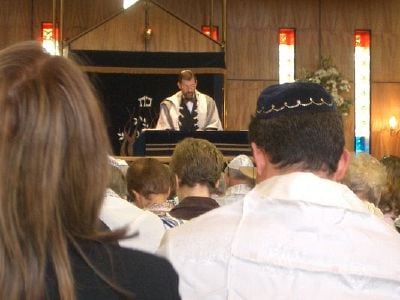
- Orthodox Judaism holds that the Torah was written by God and dictated to Moses, and that the laws within it are binding and unchanging. Orthodox Judaism consists of Modern Orthodox Judaism and Haredi Judaism. Hasidic Judaism is a sub-set of Haredi Judaism. Most Jews affirm a form of Jewish theology based on Maimonides' 13 principles of Jewish faith.
- Reform Judaism originally formed in Germany in response to the Enlightenment. It holds most of the commandments of the Torah are no longer binding and rejects many Jewish customs, emphasizing instead the moral and ethical teachings of the prophets. Reform prayer services are often in the vernacular rather than Hebrew, and Reform rabbis are allowed to perform interfaith marriages.
- Conservative Judaism. Conservative Judaism formed in the United States in the late 1800s through the fusion of two distinct groups: former Reform Jews who were alienated by that movement's emphatic rejection of Jewish law, and former Orthodox Jews who had come to question traditional beliefs and favored the critical study of sacred Jewish texts. Conservative Jews generally hold that Jewish laws should be retained unless there is good reason to reject them.
- Reconstructionist Judaism started as a stream of philosophy within Conservative Judaism, and later became an independent movement emphasizing reinterpreting Judaism for modern times.
- Secular Judaism. Though not a formal denomination, secular Judaism, also known as cultural Judaism, forms perhaps the largest group of Jews today. Secular Jews do not adhere to any Jewish sect, rarely attend synagogue, and are not observant of most Jewish customs. While the majority of secular Jews believe in God, some are agnostics or atheists, while continuing to identify themselves as ethnic and cultural Jews.
- Humanistic Judaism is a small, non-theistic movement that emphasizes Jewish culture and history as the source of Jewish identity. Founded by Rabbi Sherwin Wine, it is centered in North America but has adherents in Europe, Latin America, and Israel.
Karaism and Samaritanism
Unlike other non-Othodox Jewish groups, Karaite Judaism did not begin as a modern Jewish movement. The Karaites accept only the Hebrew Bible and do not accept non-biblical writings such as the Talmud as authoritative. Historically, the Karaites can be traced to controversies in the Babylonian Jewish communities during the eighth and ninth centuries, although some Karaites trace their spiritual roots to back to pre-Talmudic times.
The Samaritans, strictly speaking, are not Jews but Israelites, who believe they hold the true tradition of the Torah given by God to Moses. Jews see them as mixed race Israelites who sinned by refusing to worship in Jerusalem, while the Samaritans believe it is the Jews who sinned by failing to worship at the true authorized Temple of Yahweh on Mount Gerizim. A substantial and prosperous nation during the Second Temple period, only a few hundred Samaritans survive today, living mostly near Mount Gerizim in Palestine and outside of Tel Aviv in Israel.
Principles of Jewish faith
While Judaism has always affirmed a number of Jewish principles of faith, no creed, dogma, or fully-binding "catechism," is recognized. It has an approach to Jewish religious doctrine that dates back at least 2,000 years which makes generalizations about Jewish theology somewhat difficult.
Nevertheless, in Orthodox tradition, a number of clear formulations of Jewish principles of faith have appeared, many with common elements, though they differ in certain details. Of these formulations, the one most widely considered authoritative by Orthodox Jews is Maimonides' 13 principles of faith:
- God is one. This represents a strict unitarian monotheism.
- God is all-powerful, as well as all-knowing.
- God is non-physical, non-corporeal, and eternal.
- One may offer prayer only to God.
- The Hebrew Bible, together with the teachings of the Mishnah and Talmud, are held to be the product of divine revelation.
- The words of the prophets are true.
- Moses was the chief of all prophets.
- The Torah (the five books of Moses) is the primary text of Judaism.
- God will reward those who observe his commandments, and punish those who violate them.
- God chose the Jewish people to be in a unique and eternal covenant with him.
- There will be a Jewish Messiah, or perhaps a messianic era.
- The soul is pure at birth, and human beings have free will, with an innate yetzer ha'tov (a tendency to do good), and a yetzer ha'ra (a tendency to do evil).
- People can atone for sins through words and deeds, without intermediaries, through prayer, repentance, and tzedakah (dutiful giving of charity).
The traditional Jewish bookshelf
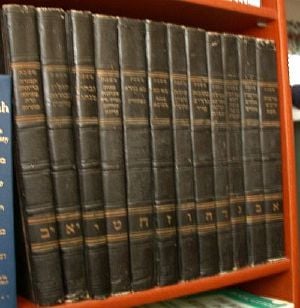
Jews are often called the "People of the Book," and Judaism has an age-old intellectual tradition focusing on text-based Torah and Talmud study. The following is a basic, structured list of the central works of Jewish practice and thought.
- The Tanakh (Hebrew Bible), consisting of
- Works of the Talmudic Era (classic rabbinic literature):
- Non-halakhic midrashic literature, also known as Aggada
- Halakhic literature
- The Major Codes of Jewish Law and Custom
- The Mishneh Torah and its commentaries
- The Tur and its commentaries
- The Shulhan Arukh and its commentaries
- Other books on Jewish Law and Custom
- The Responsa literature of rabbinic rulings
- The Major Codes of Jewish Law and Custom
- Jewish Thought and Ethics
- Jewish philosophy
- Kabbalah
- Hasidic works
- Jewish ethics and the Mussar Movement
- The Siddur (prayer book) and Jewish liturgy
- Piyyut, or classical Jewish poetry
Non-Orthodox Jews include many other Jewish works of contemporary philosophy, theology, Biblical Criticism, and psychology.
Jewish Law and interpretation
The basis of Jewish law is the Torah (the five books of Moses). According to rabbinic tradition there are 613 commandments in the Torah, although many laws were only applicable when the Temple in Jerusalem existed, and fewer than 300 of these commandments are still applicable today.
In addition to these written laws, Judaism affirms a belief in the Oral Law as well. This law was conveyed together with the Written Law to Moses at Sinai and handed down orally through the prophets and sages, eventually transmitted though the Pharisee sect of ancient Judaism, and later recorded in written form by the rabbis. In the time of Rabbi Judah Ha-Nasi during the late second century C.E., much of this material was edited together into the Mishnah. Over the next four centuries this law underwent discussion and debate in both of the world's major Jewish communities Palestine and Babylonia. The commentaries on the Mishnah from each of these communities eventually came to be edited together into compilations known as the two Talmuds, the Palestinian and the Babylonian, the latter being the more authoritative. These in turn have been expounded by commentaries of various Talmudic scholars during the ages.
Halakha is thus based on a combined reading of the Torah, and the oral tradition, including the Mishnah, the halakhic Midrash, the Talmud, and its commentaries. The Halakha has developed slowly, through a precedent-based system. The literature of questions to rabbis, and their considered answers, is referred to as responsa. Over time, as practices developed, codes of Jewish law were written based on the responsa. The most important code, the Shulkhan Arukh, largely determines Orthodox Jewish religious practice up to today.
Jewish philosophy
Jewish philosophy refers to the conjunction between serious study of philosophy and Jewish theology. Early Jewish philosophy was influenced by the philosophy of Plato, Aristotle, and Islamic philosophy. The key classical Jewish philosophers include Solomon ibn Gabirol, Saadia Gaon, Maimonides, and Gersonides.
Major changes occurred in response to the Enlightenment, leading to the post-Enlightenment and modern Jewish philosophers such as Martin Buber, Franz Rosenzweig, Mordecai Kaplan, Abraham Joshua Heschel, Will Herberg, Emmanuel Levinas, Richard Rubenstein, Emil Fackenheim, and Joseph Soloveitchik.
Who is a Jew?
According to traditional Jewish law, someone is considered to be a Jew if he or she was born of a Jewish mother or converted in accord with Jewish Law. Recently, however, the American Reform and Reconstructionist movements have included those born of Jewish fathers and Gentile mothers, if the children are raised as Jews.
Even in Orthodox tradition, a Jew who ceases to practice Judaism is still considered a Jew, as is a Jew who does not accept Jewish principles of faith and becomes an agnostic or an atheist; so too with a Jew who converts to another religion. However, in the latter case, the person loses standing as a member of the Jewish community and may become known as an apostate.
Jewish prayer and practice
Prayers
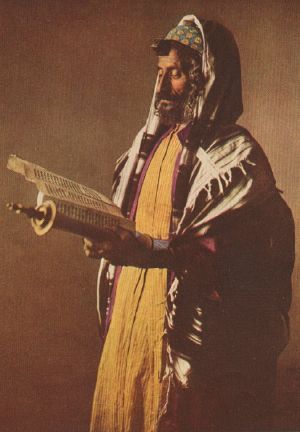
In Orthodox Judaism, there are three main daily prayer services for Jewish men. All three include a number of benedictions (18 on the Sabbath and 19 on weekdays) called the Amidah. Another key prayer in many services is the declaration of faith, the Shema. There are also prayers and benedictions recited throughout the day, such as those before eating or drinking. Women play a prominent role in the prayers of Shabbat, celebrated in the home.
Several religious objects are commonly used in prayer. The tallit is a Jewish prayer shawl. A kippah or yarmulke (skullcap) is a head covering worn during prayer by most Jews, and at all times by more orthodox Jews. Phylacteries or tefillin, boxes containing the portions of the Torah mandating them, are strapped to the forehead and forearm by religious Jews during weekday morning services.
The approach to prayer differs among the various branches of Judaism. Conservative and Orthodox congregations follow a more traditional liturgy, and Reform and Reconstructionist synagogues are more likely to incorporate translations, contemporary writings, abbreviated services, and a greater role for women, who may even serve as rabbis.
Shabbat
Shabbat (Sabbath) is the weekly, sacred day of rest lasting from Friday night sundown to Saturday night sundown, commemorating God's day of rest upon the completion of creation. It plays an important role in Jewish practice and is the subject of a large body of religious law.
Torah readings
The core of festival and Sabbath prayer services is the public reading of the Torah, along with connected readings from the other books of the Jewish Bible, called Haftarah. During the course of a year, the full Torah is read, and the cycle begins again every autumn during Simhat Torah (‚Äúrejoicing in the Torah‚ÄĚ).
Jewish holidays
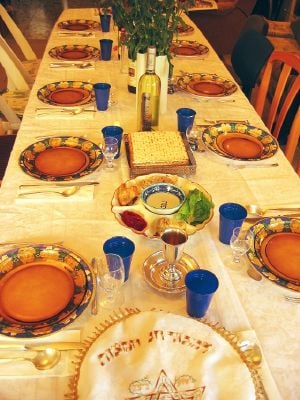
The Jewish holy days celebrate central themes in the relationship between God and the world, such as creation, revelation, and redemption. Some holidays are also linked to the agricultural cycle.
- Pesach or Passover celebrates the Exodus from Egypt, and coincides with the barley harvest. It is the only holiday that centers on a formal religious service held in the home, called the Seder.
- Shavuot or Pentacost (the Feast of Weeks) celebrates Moses' giving of the Ten Commandments to the Israelites, and marks the transition from the barley harvest to the wheat harvest.
- Sukkot, or "The Festival of Booths" is celebrated through the construction of temporary booths that represent the shelters of the people of Israel during their wandering in the wilderness. It coincides with the fruit harvest and marks the end of the agricultural cycle.
- Rosh Hashanah is the Jewish New Year, celebrating the day that the world was created and marking the advance of the Jewish calendar from one year to the next. It is also marks the beginning of the period of atonement that ends ten days later with Yom Kippur.
- Yom Kippur, or The Day of Atonement, involves fasting and solemn prayers for the redemption of sins committed during the previous year, both individual and collective. Many consider this the most important Jewish holiday.
There are many minor holidays as well, including Purim, which celebrates the events told in the biblical book of Esther, and Hanukkah, which celebrates the successful rebellion by the Maccabees against the Seleucid Empire. Hanukkah has become increasingly important in recent centuries, especially among secular and Reform Jews, as a means for Jewish families to share in the joys of the winter holiday season marked in Christian tradition by Christmas.
Synagogues and Jewish buildings
Synagogues are a Jewish house of prayer and study, usually containing separate rooms for prayer (the main sanctuary), smaller rooms for study, and often an area for community or educational use. A synagogue may contain any (or none) of these features:
- An ark where the Torah scrolls are kept
- An elevated reader's platform where the Torah is read
- An "Eternal Light" (ner tamid), a continually-lit lamp as a reminder of the menorah of the Temple in Jerusalem
- A pulpit facing the congregation for preaching and/or a small platform facing the ark from which prayers may be led
In addition to synagogues, other buildings of significance in Judaism include religious schools known as yeshivas and ritual baths call mikvas necessary for carrying various purification rituals. Jewish community centers also represent an important center of Jewish life, attracting non-observant as well as religious Jews.
Dietary laws: Kashrut
The laws of kashrut ("keeping kosher") are the Jewish dietary laws. Food, in accord with Jewish law, is termed kosher, while other food is termed treifah or treif. Orthodox Jews and some Conservative Jews keep kosher, to varying degrees of strictness, while Reform, Reconstructionist, and secular Jews generally do not.
Family purity
The niddah ("menstruant," often referred to euphemistically as "family purity") laws and various other laws (such as dress codes) regulating the interaction between men and women are perceived by Orthodox Jews as vital factors in Jewish life, though they are rarely followed by Reform or Conservative Jews. The laws of niddah dictate that sexual intercourse cannot take place while the woman is having a menstrual flow, and the wife must count seven "clean" days and immerse in a mikvah (ritual bath) before resuming marital relations.
Life-cycle events
Life-cycle events occur throughout a Jew's life that bind him/her to the entire community.
- Brit milah‚ÄĒWelcoming male babies into the Abrahamic covenant through the rite of circumcision
- Bar mitzvah and Bat mitzvah‚ÄĒCelebrating a child's reaching the age of religious majority.
- Marriage
- Shiv'ah (mourning)‚ÄĒA multi-staged mourning practice.
Community leadership
Priesthood
Prior to the destruction of the Second Temple in 70 C.E., priests were crucial to Jewish worship, since it was they who attended to the required Temple and sacrifices. Since the priesthood is an inherited position, in many Orthodox Jewish communities priests are treated with honor, even though they may not perform their duties. The priestly orders include the Kohen, a priest descended from Aaron and the Levite, descended of Levi, the son of Jacob.
Prayer leaders
The most common professional clergy in a synagogue are:
- Rabbi of a congregation‚ÄĒA Jewish scholar who is charged with answering the legal questions of a congregation and/or acting as is pastor.
- Hazzan (cantor)‚ÄĒA trained vocalist who leads in the recitation of prayers, chants, or songs.
The following roles may be filled by a rabbi and/or cantor, or by specialists:
- Shaliach tzibur or Shatz, the congregation's prayer leader.
- Baal koreh, the "master of the reading," who reads the weekly Torah portion.
- Gabbai (sexton), summons people to read the Torah, appoints the shatz for the week if this position is not permanent, and makes certain that the synagogue is kept clean and supplied.
Specialized religious roles
Other religious specialists include the following, some of which require rabbinical degrees:
- Dayan (judge)‚ÄĒAn expert in Jewish law who sits on a beth din (rabbinical court) for civil suits and divorce cases.
- Mohel‚ÄĒThe man who performs the brit milah (rite of circumcision).
- Shochet‚ÄĒA butcher trained in the slaughter of kosher meat.
- Sofer‚ÄĒA scribe responsible for copying Torah scrolls and other religious documents.
- Rosh yeshivah‚ÄĒThe head and chief lecturer of a yeshiva.
- Mashgiach of a yeshiva‚ÄĒAn expert in mussar (ethics) who oversees the spiritual welfare of the students in a yeshiva.
- Mashgiach over kosher products‚ÄĒAn overseer of merchants and manufacturers of kosher food.
Judaism and other religions
Christianity and Judaism
Although Christians believe in God and accepted the Hebrew Bible as their Old Testament, Jews have endured a stormy relationship with Christians throughout history. One issue causing difficulty was the development of the Christian doctrine of the Trinity, seen by Jews as a violation of the strict principle of monotheism. Another key issue in this dynamic is the supposed Jewish responsibility for the death of Jesus, which resulted in a long-standing tradition of Christian anti-Judaism.
From a Jewish viewpoint the the Holocaust represented the culmination of Christian civilization's animosity toward the Jews. Since the end of World War II, Christian-Jewish reconciliation has made important strides, as some denominations have officially rejected the doctrine of Jewish collective responsibility for killing Jesus, and the Catholic Church has gone so far as to apologize to the Jews for its history of antisemitism.
Islam and Judaism
Like Christianity, Islam recognized the Jewish scriptures as valid, and also stuck to a firm tradition of monotheism. During the last 1500 years, Judaism underwent significant developments under Islamic rule, leading to an interplay between the two religions which has been both positive and negative at times. Jewish communities flourished under Islamic governments in Babylonia, and the later period around 900 to 1200 C.E. in Moorish Spain, and came to be known as the Golden age of Jewish culture in Spain. Indeed, for much of its history, Judaism fared much better under Muslim regimes than Christian ones. The twentieth century animosity of Muslim leaders towards Zionism and the establishment of the state of Israel have led to a serious crisis in Jewish-Islamic relations, involving occasional violence between Muslims and Jews, especially in Israel and Palestine.
See also
- Anti-Semitism
- Zionism
- Halakha
- Torah
- Rabbi
- Abrahamic religions
- Conservative Judaism
- Orthodox Judaism
- Reform Judaism
ReferencesISBN links support NWE through referral fees
- Elazar, Daniel Judah, and Rela M. Geffen. The Conservative Movement in Judaism: Dilemmas and Opportunities. SUNY series in American Jewish society in the 1990s. Albany: State University of New York Press, 2000. ISBN 9780791446898.
- Freundel, Barry. Contemporary Orthodox Judaism's Response to Modernity. Jersey City, NJ: KTAV Pub. House, 2004. ISBN 9780881257786.
- Gotzmann, Andreas, and Christian Wiese. Modern Judaism and Historical Consciousness: Identities, Encounters, Perspectives. Leiden: Brill, 2007. ISBN 9789004152892.
- Gurock, Jeffrey S. From Fluidity to Rigidity: The Religious Worlds of Conservative and Orthodox Jews in Twentieth Century America. David W. Belin lecture in American Jewish affairs, 7. Ann Arbor: Jean and Samuel Frankel Center for Judaic Studies, the University of Michigan, 1998. ISBN 9781881759065.
- Hirsch, Ammiel, and Yaakov Yosef Reinman. One People, Two Worlds: An Orthodox Rabbi and a Reform Rabbi Explore the Issues That Divide Them. New York: Schocken Books, 2002. ISBN 9780805211405.
- Levy, Richard N. A Vision of Holiness: The Future of Reform Judaism. New York: URJ Press, 2005. ISBN 9780807409411.
External links
All links retrieved February 24, 2025.
- Welcome to Judaism 101! Judaism 101
- What Does It Really Mean to Be 'Jewish?' Learn Religions
- Jewish Concepts. Jewish Virtual Library
- Chabad-Lubavitch Hasidism chabad.org
- Conservative Judaism: Background & Overview Jewish Virtual Library
- Reconstructing Judaism. reconstructingjudaism.org
- Society for Humanistic Judaism shj.org
- Karaite Judaism The Karaite Korner
- Who is a Jew? by Rebecca Weiner Jewish Virtual Library
Credits
New World Encyclopedia writers and editors rewrote and completed the Wikipedia article in accordance with New World Encyclopedia standards. This article abides by terms of the Creative Commons CC-by-sa 3.0 License (CC-by-sa), which may be used and disseminated with proper attribution. Credit is due under the terms of this license that can reference both the New World Encyclopedia contributors and the selfless volunteer contributors of the Wikimedia Foundation. To cite this article click here for a list of acceptable citing formats.The history of earlier contributions by wikipedians is accessible to researchers here:
The history of this article since it was imported to New World Encyclopedia:
Note: Some restrictions may apply to use of individual images which are separately licensed.
